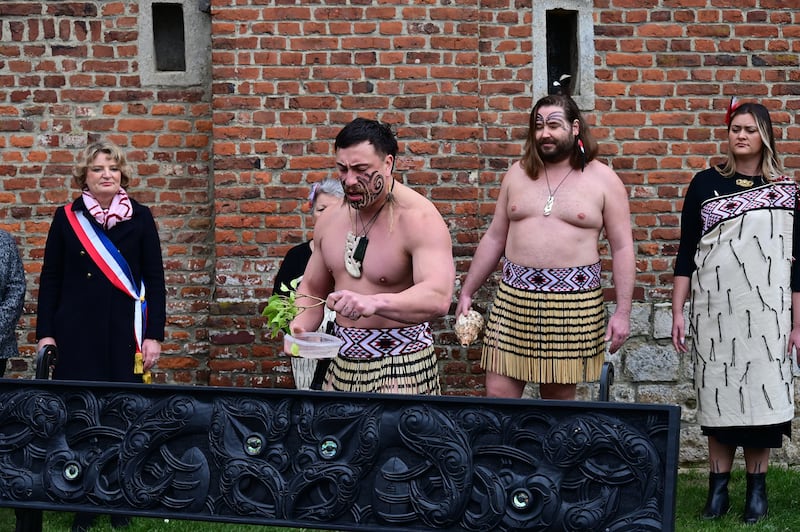A carved bench has been unveiled on Saturday at the NZ Liberation Museum – Te Arawhata in Le Quesnoy representing the enduring friendship between Kiwis and the people of the French town.
The bench is one of four donated by New Zealand Rugby to France to mark the sporting bond and friendship between the two countries. Three benches were gifted during last year’s Rugby World Cup, with the fourth going to the NZ Liberation Museum this year.
Museum Manager Josh Hansen says gifting the bench to the museum and the people of Le Quesnoy reinforces the friendship between New Zealand and the small French town.
“The courage of Kiwi soldiers during the liberation of the town in 1918 created an incredibly special bond between the people of Le Quesnoy and New Zealand. Maintaining this friendship is key to making the museum a go-to destination for New Zealanders and European travellers when they are visiting Northern France.”
Ngāti Rānana, the London Māori club, blessed the bench with karakia and waiata at the ceremony attended by Le Quesnoy mayor Marie Sophie Lesne, New Zealand’s ambassador to France, Caroline Bilkey , former All Black Andrew Mehrtens and a senior New Zealand Rugby manager, Mike Moeahu.

Every bench has a unique story
The four carved benches were created at the New Zealand Māori Arts and Crafts Institute – Ngā Kete Tuku Iho, in Rotorua. Each bench is unique, according to the carvers’ interpretations.
“Te Arawhata symbolises freedom, friendship, and the future. The bench also speaks to these themes. It is about community. It is a very precious taonga, with the Māori motifs in the carvings not only celebrating the All Blacks, but also supporting the communities in which we all exist.”
The New Zealand Liberation Museum – Te Arawhata, which opened in October last year, commemorates the liberation of Le Quesnoy from German occupation by Kiwi soldiers in World War I.
Wētā Workshop, best known for its screen work on Lord of the Rings, Avatar, and Dune, created the immersive visitor experience including a large-scale, hyper-realistic soldier, which is one of the first figures visitors see when they enter the museum. A centrepiece of the experience is Te Arawhata (The Ladder), a 7.4m structure that extends up through the museum stairwell.
Honouring those who fought in war
Hansen says the bench complements the visitor experience and the rugby exhibition, From the Field to the Front, now showing at the museum.
“The exhibition honours the All Blacks who went to war by telling their stories as well as highlighting the societal impact rugby had on New Zealand and the bench continues this legacy.
“The bench. placed in front of the museum, is also a place for people to remember those 93 All Blacks who served in World War I, and the 13 who lost their lives. This included All Black Number 164, Alexander Ridland, who lost his life here in Le Quesnoy on November 5, 1918.”
The unveiling of the bench is the first of many major events planned in 2024, including the museum’s first Anzac Day commemorations from April 25-28.
“We like to think of the museum as Aotearoa’s tūrangawaewae on the Western Front. It is a very special place and we’re looking forward to hosting visitors from New Zealand, England and other European countries at our very first Anzac Day events,” says Hansen.
The NZ Liberation Museum – Te Arawhata was created solely through donations from New Zealanders – with nearly $15 million raised to date, and fundraising continues.



